Entering the second matchday of the group stage, the Champions League has brought us many interesting results on Tuesday evening. It continued the trend as the likes of Barcelona, RB Leipzig and Ajax were all matched up against tough opponents. Chelsea weren’t an exception either as they travelled to France to face Lille, who finished second in Ligue 1 last season.
Domestically, the visitors have had a decent start to the Premier League season with eleven points after seven matches. Under Frank Lampard, they have demonstrated an attractive style of play but also put an emphasis on defensive solidity. Meanwhile, in his second season with the club, Christophe Galtier led Lille to a Champions League group stage spot with a high-tempo style of play. He continued to employ the strategy and principles that helped Les Dogues secured that achievement amid the significant departures from the club.
This tactical analysis will provide an analysis of Chelsea’s 2-1 victory over Lille OSC. Meanwhile, using statistics, we will point out the standout tactical points in both teams’ tactics while analysing what Galtier could have done to secure a more positive result at home.
Lineups
For their match against Chelsea, Galtier opted to go for a 4-4-2 formation that saw Mike Maignan started in goal. American prospect Timothy Weah remained the only injury as he missed out through a hamstring tear. On the other hand, a player that would be familiar to Chelsea fans in Loïc Rémy appeared on the bench after an impressive performance against Strasbourg.
The Portuguese duo Renato Sanches and José Fonte also spent time in the Premier League for Swansea City and Southampton respectively. While the latter started at the heart of Lille’s defence and also captained the side, the former was registered on the bench. Up front, new signing Victor Osimhen hoped to continue his impressive goal-scoring streak alongside Jonathan Bamba.
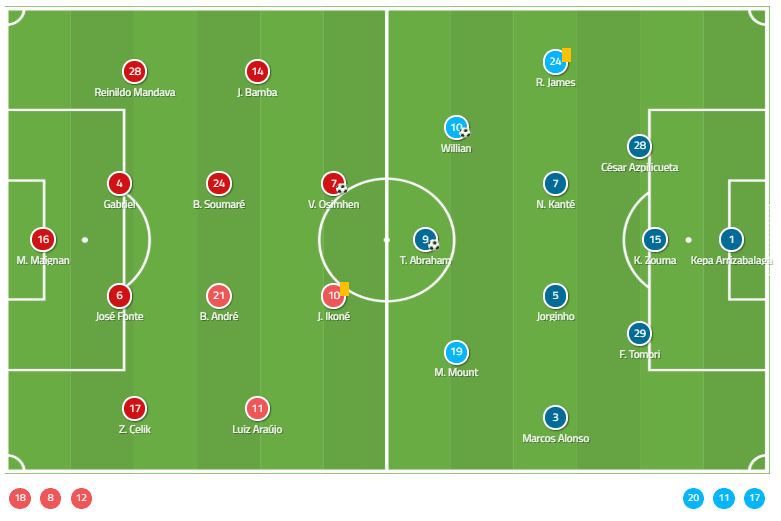
Meanwhile, Lampard once again converted his side to a 3-4-2-1 formation. Andreas Christensen was deemed fit for the match as he appeared on the bench. Meanwhile, Kurt Zouma was chosen to fill in the Danish defender’s spot and he completed the back-three that consisted of Fikayo Tomori and César Azpilicueta.
After a strong debut against Grimsby Town in the League Cup, Reece James was once again chosen by Lampard to play as a right wing-back in this match. Jorginho and N’Golo Kanté remained Chelsea’s key central midfielders while Mateo Kovačić was rested when they welcomed Brighton & Hove Albion and he continued to be registered among the substitutes.
Lille’s style of play
The fact that both Lille and Chelsea were rated as high as each other allowed the French side to approach this game with a confident attitude. They clearly showed their intention of securing a positive result by employing the strategy that contributed to a magnificent season in Ligue 1.
Out of possession, Lille players formed a clear 4-4-2 defensive structure that sat in the middle of their half. The two defensive lines positioned themselves on the edge of the defensive third and in front of the 16-yard box. At the same time, they would keep the distance between the lines as narrow as possible. Galtier wanted his players to eliminate every possible attack that could come from the spaces between the lines. With Chelsea attempting to overload the middle area on several occasions, this strategy was crucial in keeping the opposition from reaching Mike Maignan’s goal.
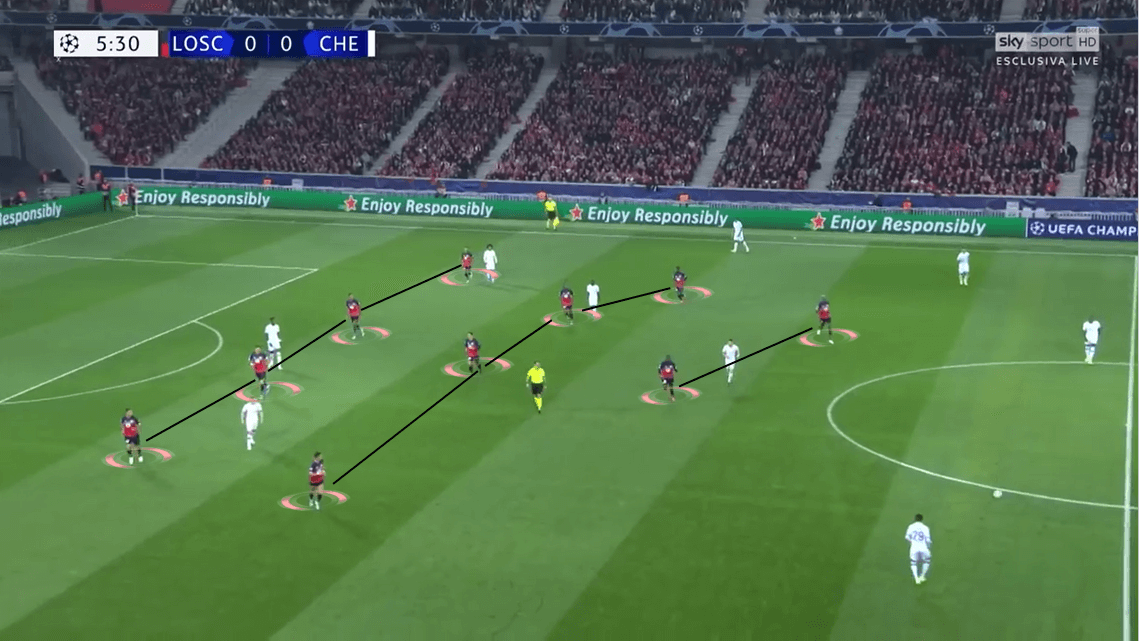
Furthermore, it’s worth noticing that they would stretch their shape wide rather than staying centrally. This allowed them to occupy the wide-area along with swarming the central half of the pitch. Chelsea would find themselves struggling in distributing the ball wide and they were forced to circulate the ball among the defenders.
Also, Chelsea’s attacking trio of Tammy Abraham and two attacking midfielders usually sat on the shoulders of defenders. To deal with the mentioned strategy, the defenders had to stay discipline to track their runs and intercepted any passes coming toward them. They held their respective positions to prevent gaps being created behind their back and between themselves.
On several occasions, it was possible to see Lille players attempting to create overloads in certain areas of the pitch. In that case, the home side would move players into that side of the pitch and swarmed the space surrounded the ball carrier. By doing so, they were able to isolate that player and eliminated possible passing options around him. They would use numerical superiority that they had to approach and recover the ball, allowing Lille to keep possession on a constant basis.
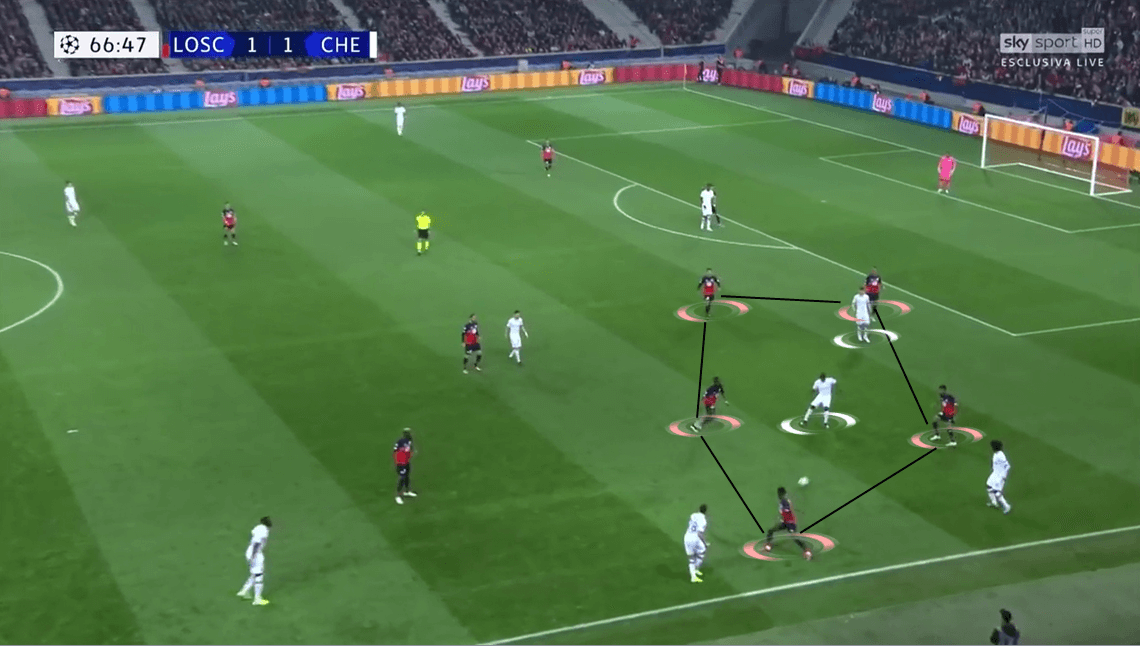
But inside the second half, Lille made some changes to their defensive tactics to cope with Chelsea’s attacking ability. One of the noticeable tactical points that they made was keeping the midfield line compact to limit the threat of Jorginho or Mason Mount. Still, that left a major problem which the visitors constantly made the most out of during the period.
As the shape shifted laterally across the pitch and along with the ball, they left the wide-area unoccupied as both wing-backs were pinned down by Chelsea’s wingers. This allowed Kurt Zouma and Fikayo Tomori to distribute the ball into that space for the wing-backs’ overlapping runs. It seemed that Lille did the opposite thing to what they intended inside the first half, and therefore, encouraged Chelsea to attack down both flanks.
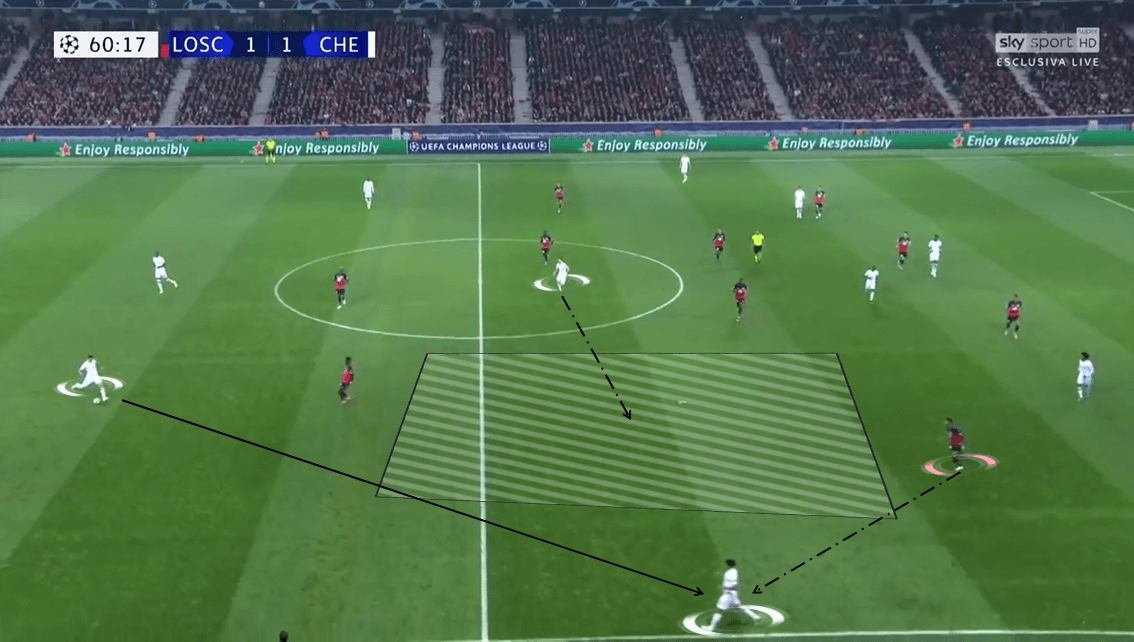
Up front, Lille also increased the pressure on Chelsea’s centre-backs when they built from the back. Osimhen and Jonathan Ikoné were always ready to press aggressively and recover the ball inside the opposition’s half. If one of the centre-backs decided to distribute the ball out wide, either Luis Araújo or Bamba would step out of the shape to provide support for the strikers.
Moreover, the players also took on the man-oriented marking which saw each of Lille’s attackers follow a Chelsea player who was involved in the build-up. It prevented the away side from winning numerical superiority and progressing the ball up the pitch. At the same time, if they did manage to win the ball inside the opposition’s defensive third, they would have enough players to create a counter-attack towards Kepa Arrizabalaga’s goal.
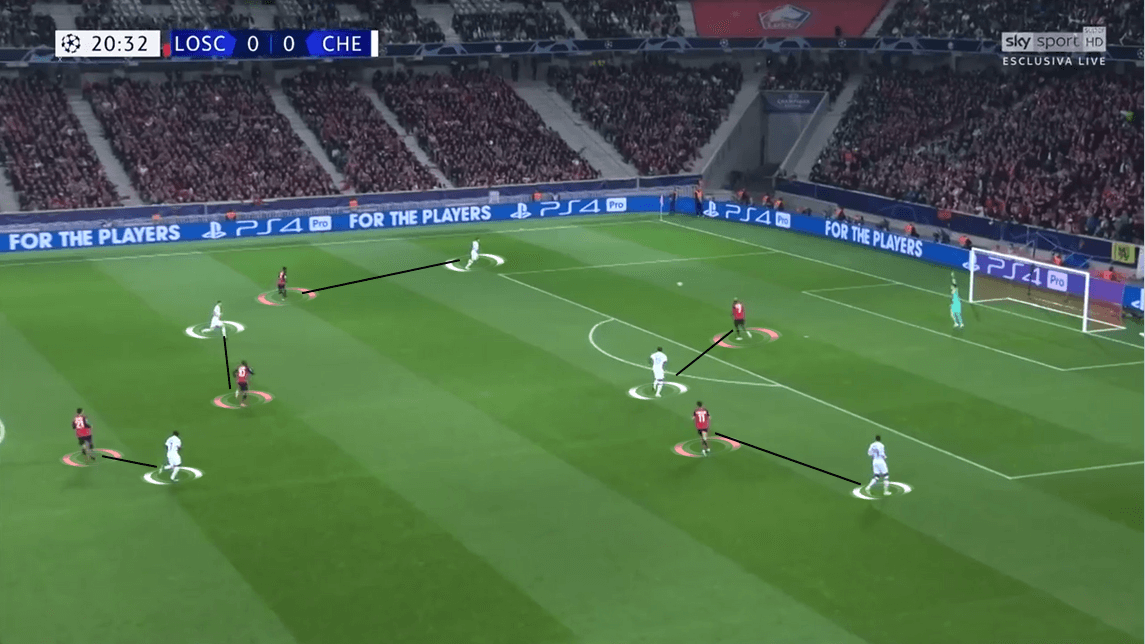
In possession, the players formed a passing block which consisted of two centre-backs and two central midfielders. With at least four players involved in the build-up, they could circulate the ball easily even when Chelsea started to press. Also, it’s worth noticing that they usually positioned themselves on the edge of the middle third. This pushed the opposition’s defensive structure into their half. At the same time, it would also narrow the distance between them and the attackers, allowing more through balls to be made.
When the build-up took place, the wing-backs would push higher up the pitch. They filled in the spaces that the wingers left behind when they tucked inside. By doing so, it divided the team into two-player groups on the pitch with different responsibilities. One would concentrate on moving the ball forward, the other focused on their off-the-ball movements to capitalise on any free space.
This also created more passing options for central midfielders Boubakary Soumaré and Benjamin André when they entered the opposite half with the ball. They could choose to attack the wide spaces using the pace of wing-backs Zeki Çelik and Reinildo Mandava. Or turning to the half-spaces with the flexible movements from the attacking players.
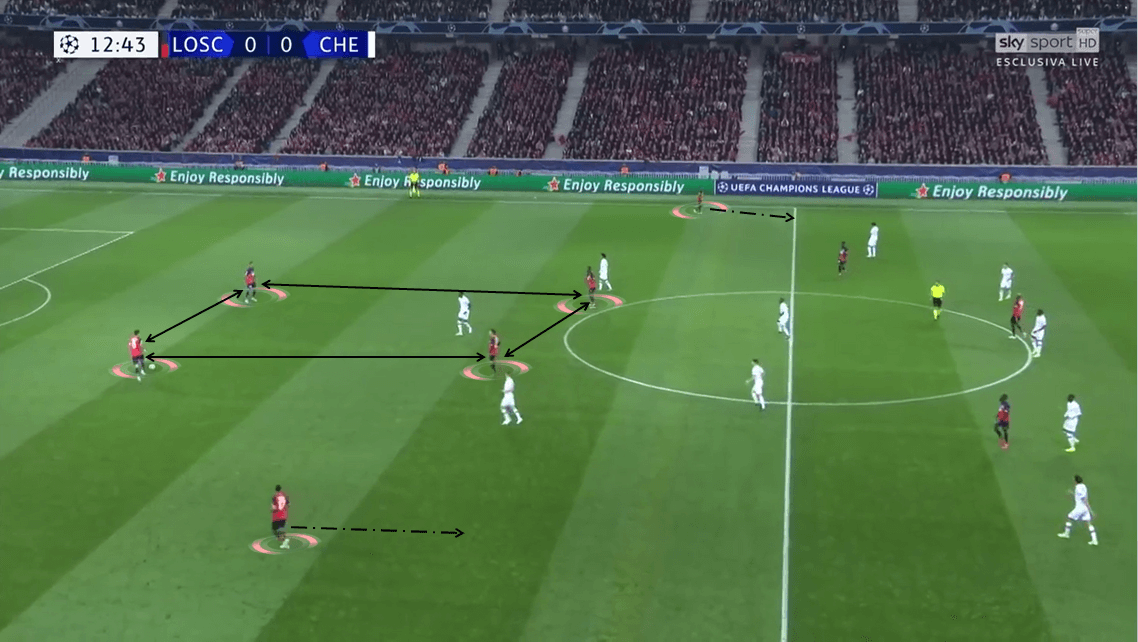
Up front, the three attacking midfielders and the striker usually worked inside the central area and occasionally changed position with each other. Because Chelsea’s defensive structure consisted of two defensive lines, it created spaces in between and that was where the strikers worked. They were flexible in picking out a position to receive short passes, while still capable of chasing long balls behind Chelsea’s defensive line.
The shot below was one of the examples that Lille showed in the match. During the game, it wasn’t unusual to see both Araújo and Bamba tuck inside and work more in the half-spaces. This situation wasn’t an exception either as the former São Paulo player moved in between Chelsea’s defensive line to receive the pass from Soumaré. As a result, he attracted the attention of Tomori and dragged him out of his position.
The English centre-back left a gap behind his back and invited both Osimhen and Ikoné to move in. While the Nigerian striker stopped to receive the pass from Araújo, Ikoné continued his run and turned up at the end of Osimhen’s pass, which led to him being fouled by Zouma later on.
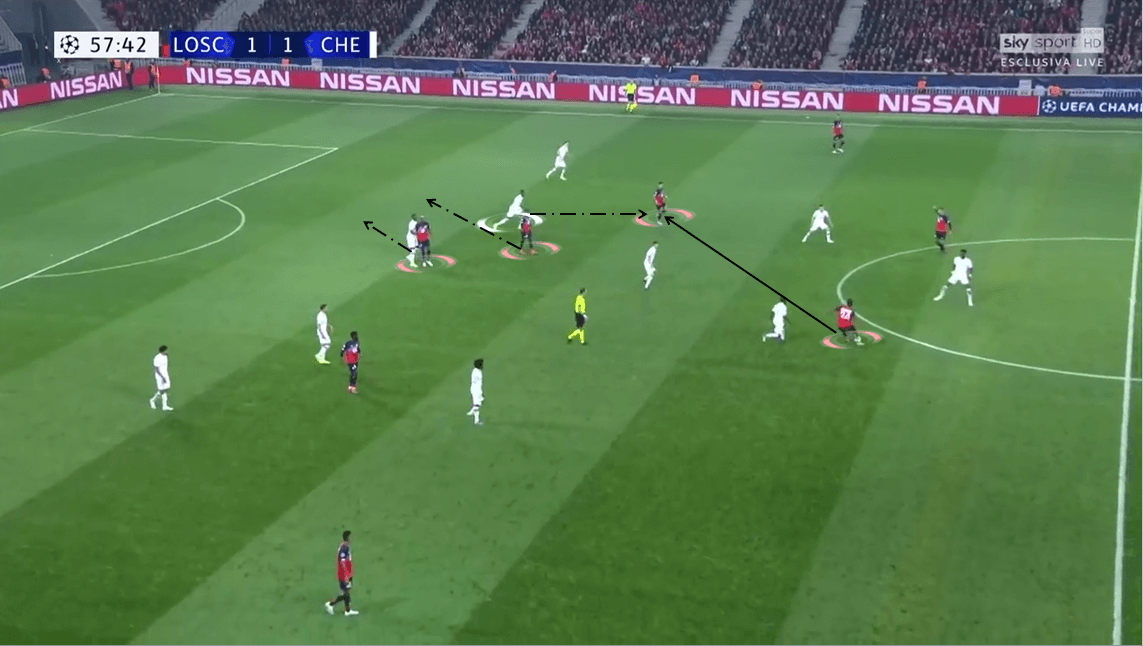
Chelsea’s style of play
Although it is the first time Lampard has entered the Champions League in the role of a manager, he didn’t show signs of lacking experience. Besides from being kept from doing what they have done best, Lampard also made a few changes to adapt with the opponent that they played against.
Firstly, he wanted his side to put an emphasis on building their attacks from the back. Christensen and Zouma were two centre-backs who were comfortable on the ball and constantly involved in circulating the ball among the block. The same can be said about César Azpilicueta as the Spanish defender also played a key role in connecting the centre-backs with the likes of James or Kanté. Using his passing ability, he could find the mentioned players in an active position and allowed them to continue the team’s attack.
On both flanks, Marcos Alonso and James stayed higher and positioned themselves in the central area of the middle third. They must also be able to make overlaps and support Willian and Mount in attacks. At the same time, their positioning must also turn him into a possible passing option which allowed the centre-backs to distribute wide against Lille’s pressure.
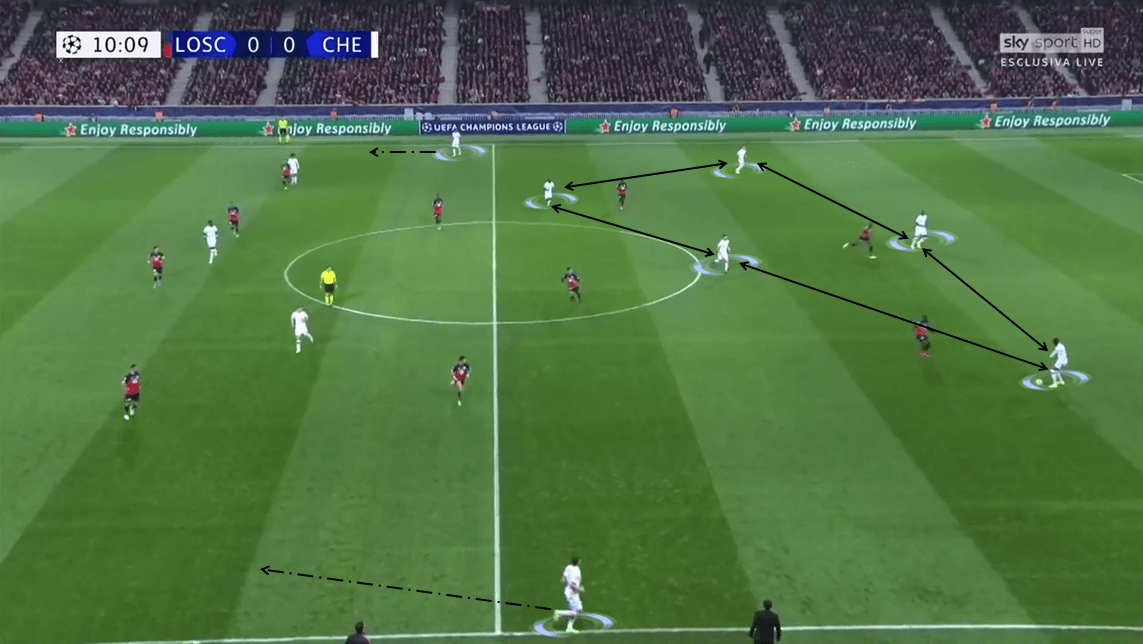
In the first half, playing with three centre-backs allowed Chelsea to have numbers during their build-up process. As James wasn’t subbed off before the 67th-minute mark, they still used a 5-2-1-2 formation in attack. But Lampard decided that the former Wigan loanee’s time on the pitch must come to an end, he also moved Azpilicueta back into the right-back position.
To keep the three-man build-up in the second half, Jorginho from his role would drop deep and move in between the central area of the passing block. He would create passing triangles with the defenders and allowed them to circulate the ball more efficiently. If Lille increased their pressing intensity, Kanté would join the Italian midfielder by staying on the same line as him.
Usually, though, Jorginho would find himself standing in free space. Although Lille attempted to press using two different pressing lines, they still left the former Napoli midfielder unmarked like in the shot below. A player with his calibre wouldn’t want to miss such an opportunity to receive the ball and then make a progressive pass up the pitch. Indeed, after picking up the pass from Zouma, he oriented his body towards the opposite half, only to find James with a long pass and allowed him to continue the attack.
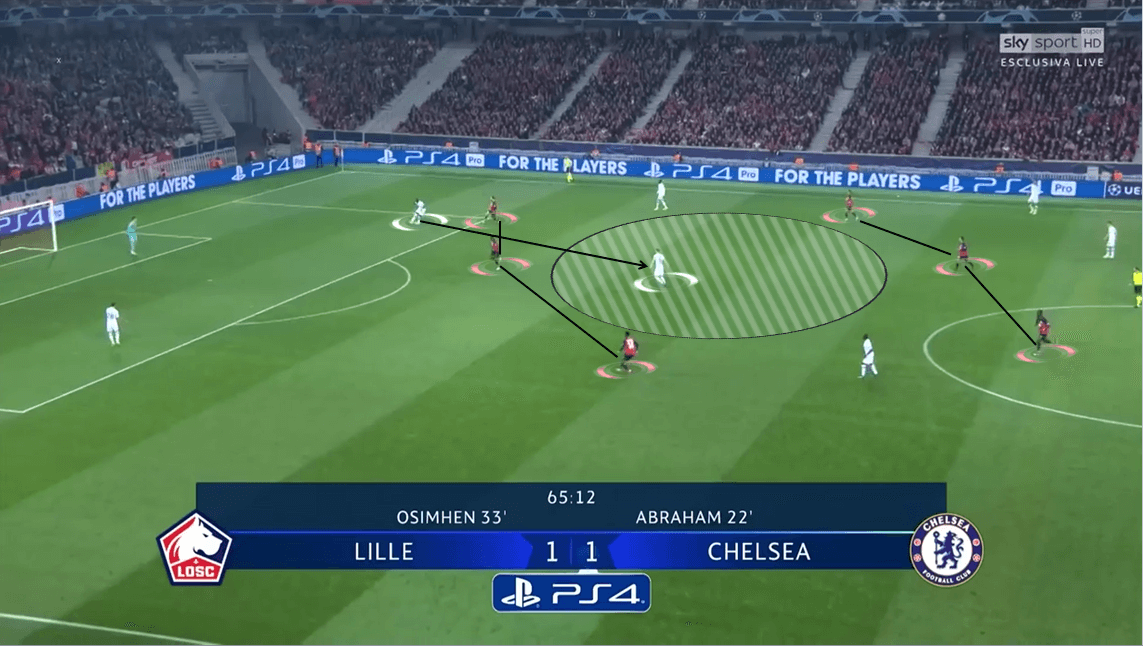
Up front, Mount operated in between the lines and occasionally moved away from the box when he was off-the-ball. By doing so, he dragged along one of Lille defenders and created spaces behind his back. Abraham also had the tendency of locating high up the pitch and attempted to beat the offside trap that Lille set up on some occasions.
In his opening goal of the game, he showed the positional awareness and intelligence of his. Before he received the ball from Tomori, his attention was turned towards Reinildo’s positioning as the former Belenenses defender dropped deeper than his teammates. By locating himself just higher than Reinildo, he was able to show up at the end of the pass. As a result, Abraham found himself in a 1v1 situation with Maignan and beaten him through a shot towards the top right corner.
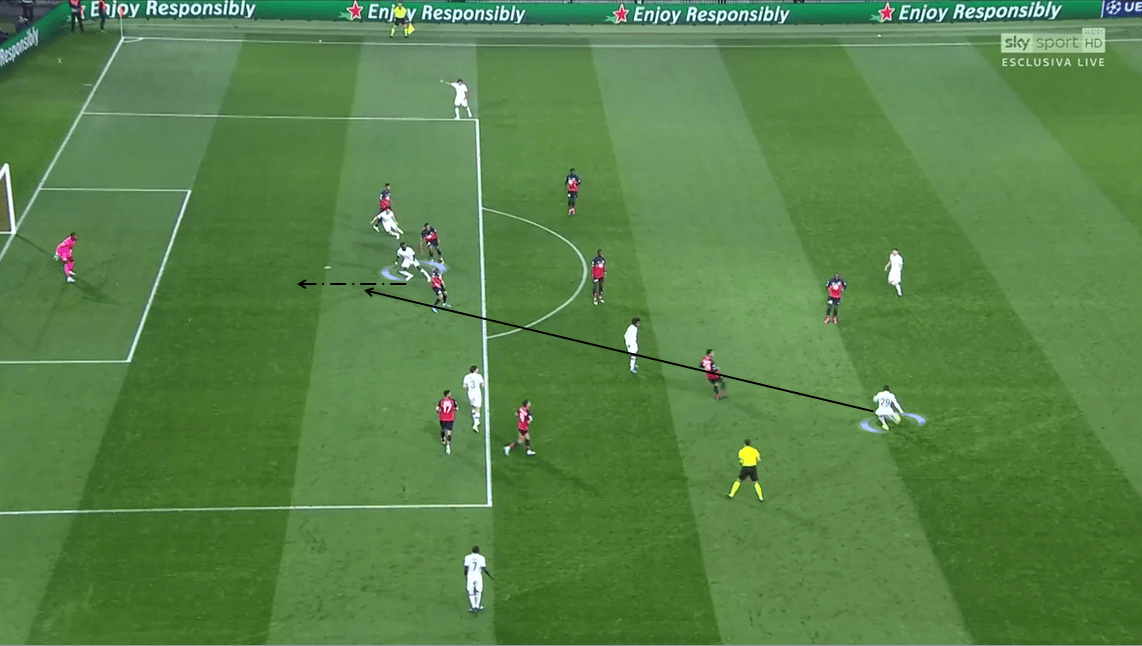
As mentioned, Lille changed their approach inside the second half and decided to keep their defensive shape compact. This allowed Chelsea to distribute the ball wide on more occasions and allowed both Alonso and James to show their abilities. From the central area of the pitch, Jorginho would scan for possible pockets of space that James and Alonso could move in. If he managed to find one, then a long pass would be made into that gap and also encouraged either wing-back to move in.
In counter-attacking situations, the visitors used a different approach to find the wing-backs. After winning possession back, they would create short combinations between the players to progress the ball up the pitch. It gave Alonso and James more time to make an overlapping run and position themselves in free space. Usually, those combinations took place on either flank and the ball carrier on that side would find the wing-back on the opposite side through, again, a long pass.
It’s not a rare sight to see Chelsea using this strategy to get the ball into the final third and at the same time, capitalise upon the space that Lille left behind, especially in the second half. Lille went for a strategy that somewhat countered against what they wanted to do, and therefore, allowed the opposition to create more dangerous attacks toward the goal.
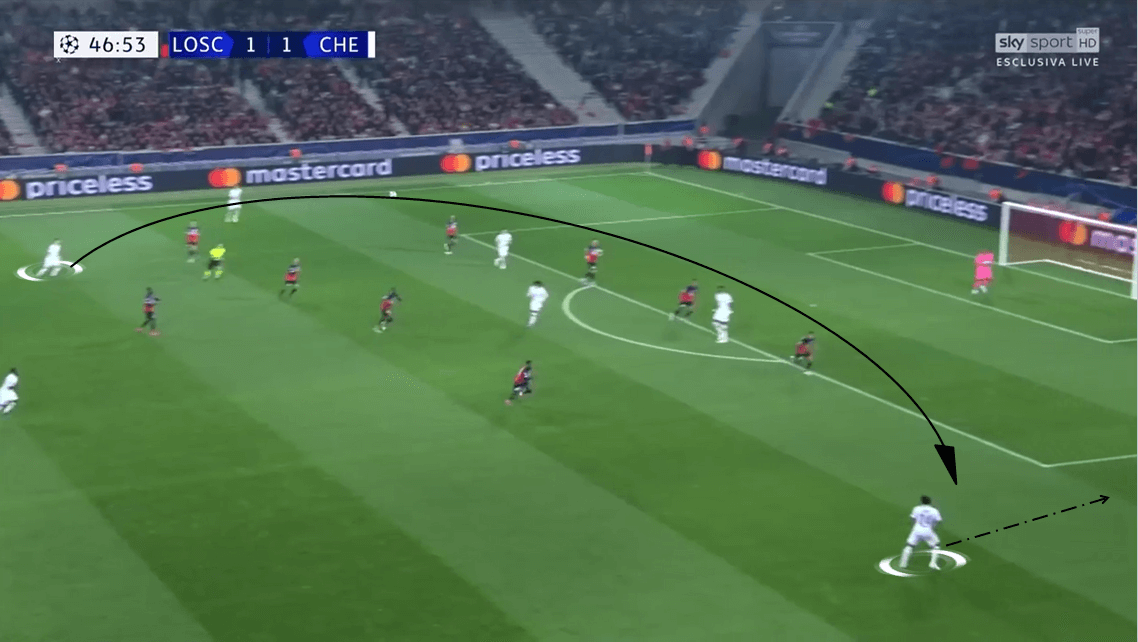
Again, about the problem of Lille leaving too many spaces for Chelsea to create attacks. We have mentioned the fact that their defenders had the tendency of being disciplined in defence and creating overloads in certain areas of the pitch. The situation below combined both of that but they still weren’t able to stop Mount from reaching the 16-yard box.
With five players forming an asymmetric box and shifted towards the ball carrier, Willian, they were able to eliminate the space around him. Moreover, they had two players ready to apply pressure on the Brazilian winger to win the ball back, which they didn’t do. Another thing which they also didn’t notice was Mount attempting to attack the space behind centre-back Gabriel. With both Fonte and Çelik pinned down by another two Chelsea players, the English midfielder was free enough to continue his run and pick up the pass from Willian at the same time.
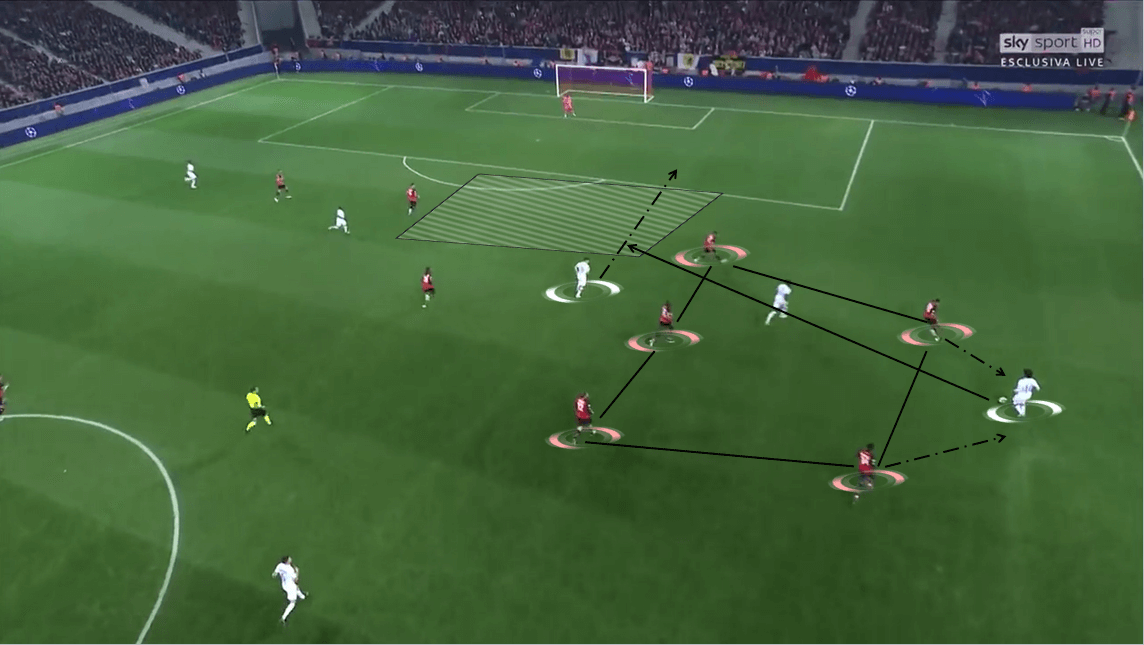
Defensively, they formed a narrow 5-3-2 defensive structure with the aim of narrowing the space between the lines and prevented Lille from reaching the 16-yard box. They also used a variation of it in a 5-4-1 when Willian dropped deep from his position and pushed Mount out wide. Using two separate defensive lines, they started the press inside the middle third and retreated in front of the goal.
The midfield line had the responsibility of following the ball carrier and marking the nearest passing options to him. They had the license of recovering possession aggressively but avoid fouls which occurred around the area near the box. The defensive line below stayed more compact compared to the midfielders. While intercepting passes that came towards the zone 14 and their box, the players must also track the runs of Lille players and prevented them from tearing the line apart.
Usually, it was possible to notice the midfielders combined with the strikers to overload the middle area. They attempted to lock the ball carrier down and forced him to make a back pass or distribute wide. The second defensive line kept the distance between players a bit wider. James and Alonso would occupy the half-spaces and track the runs of Araújo and Bamba. They would also act as the focal point when the team shifted across the pitch and started to press.
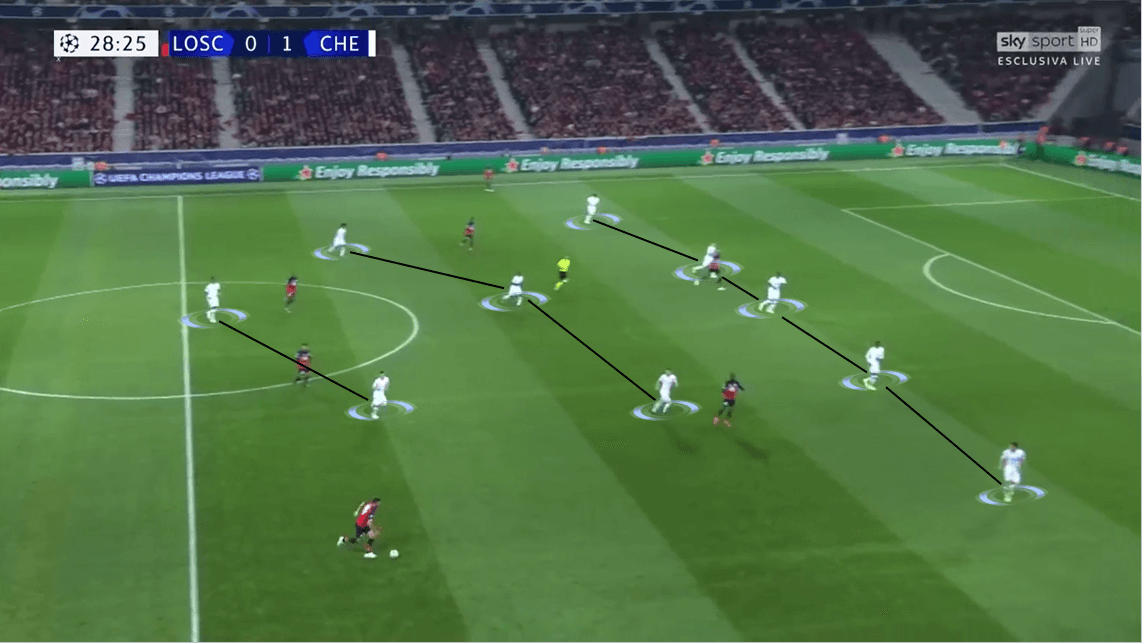
Conclusion
It was an evenly-matched clash between two of the most exciting teams to watch this season, not just in the Champions League, but also in their respective domestic leagues. But eventually, three points belonged to the team who were able to create and convert their chances at a higher efficiency rate, which was Chelsea. They capitalised on the errors that Lille had shown in the match to progress the ball into the final third and made the most out of it.
Meanwhile, Lille didn’t have such a bad game as the French side executed their plan quite perfectly inside the first half. But it felt like the changes that Galtier made at the turn of both halves seem quite unnecessary as they exposed Lille’s weaknesses and invited Chelsea to use it constantly. It is important for them to learn from the mistakes and the problems that they had in this match before they welcome Olympique Nîmes to the Stade Pierre Mauroy this weekend.
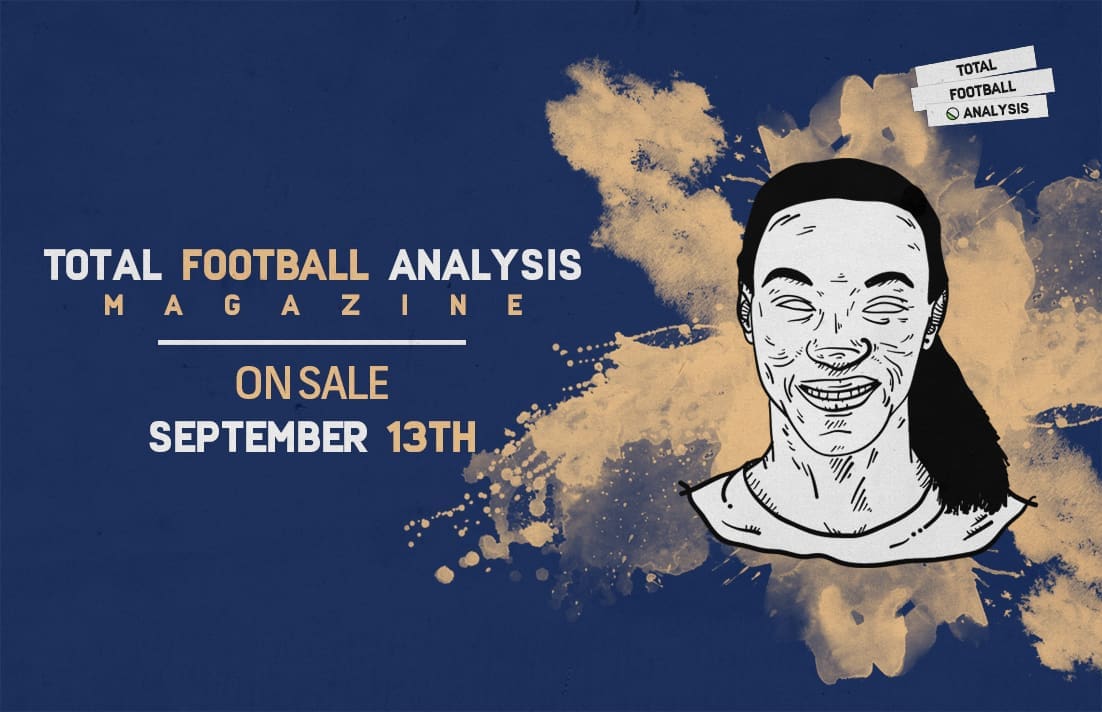
If you love tactical analysis, then you’ll love the digital magazines from totalfootballanalysis.com – a guaranteed 100+ pages of pure tactical analysis covering topics from the Premier League, Serie A, La Liga, Bundesliga and many, many more. Buy your copy of the August issue for just ₤4.99 here




Comments